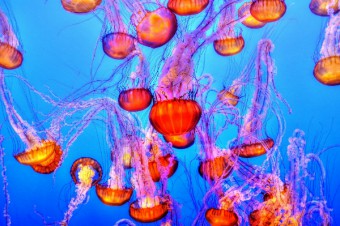
I live in a gap as wide as two oceans.
It’s the gap between what Australians think of as Asian (i.e. East Asians and South East Asians), and what the continent of Asia really encompasses.
Sometimes, it means benefiting from this gap, particularly because I share a first language (English) with the Australian mainstream. Sometimes, it means being cut off from discussions about race and identity as they pertain to Asian communities.
My sense of self is awash with a sense of being from Asia, not least because of the mediatised expressions of Asianness that have surrounded me for many years growing up in India: I was first exposed to colour television during the Asian Games held in New Delhi in 1982 when Appu the elephant was the mascot; the intensive and familial coverage of SAARC (South Asian Association for Regional Cooperation) summits by the Indian media further cemented a sense of belonging to the Asian continent; and just in case I still had any doubts, the satirical depiction of British Asians in the hit BBC show Goodness Gracious Me featured people who looked like me and sounded like me, thereby removing all uncertainties in this regard.
But, here in Australia, I’m an Indian, a sub-continental, an ethnic, a migrant, a wog, a curry muncher, a black cunt, even a Paki. But rarely am I seen as Asian.
I have also often felt that this gap I inhabit, as wide as two oceans, is also a bubble. For years, I thought I was unique. Not the Chosen One, but the only one, or at least one of the very few non-White people at events such as film screenings at Popcorn Taxi at the Valhalla in Glebe, protests during the Tampa incident, sitting in the audience at writers’ festivals, cringing at ‘Gunga-Din’ references of various kinds, instead of being a good money-making migrant.
Culture is a funny thing. Being an Indian Australian, I have alternated between pride and cringing, sometimes happy to have Indian roots, or to be mistaken for an Indigenous person, often concerned about whether my accent is understood, always conscious of my difference from the mainstream.
Until I went to Melbourne last year, to the AASRN conference, and found my tribe.
Okay, I’m exaggerating.
I did know of them online. I had read of Tseen Khoo, had heard her name whispered in corridors, had read her tweets and Facebook posts and her blogging on the Research Whisperer, and her AASRN work, and wondered if she was an online creation, a hybrid of many people. I had read the books and blogs of many at that conference, like the keynote speaker Ien Ang, and other brilliant scholars like Jacqueline Lo and Jen Tsen Kwok to name but a few. I also knew, via Facebook, that Sukhmani Khorana, a fellow Australian of Indian background and my colleague at Southern Crossings, was on the conference convening committee.
Still, I was not sure what to expect face-to-face at this conference of people who were legit Asians, unlike me whose position as ‘Asian’ in Australia seemed to be precarious at best. More than likely, I would be an outsider, observing discussions about Asianness in the Australian context: all about China and Indonesia and Vietnam, Japan, and Malaysia and Thailand, Taiwan, the Philippines, Korea, and Cambodia. Perhaps there would be thickly drawn borders around what it means to be Asian in Australia. I would have to mind the gap, although in a different way from that intended by the higher-ups of the underground transport service of our former colonisers, potent though the resonances may be, aware, again, of my difference.
But the moment when my online and offline worlds embraced each other last year in Melbourne was a moment of gentle awakening, like a tide slowly coming in. Tseen Khoo turned out to be an actual human being, generous and gracious despite her mythical status. Ien Ang, Jacqueline Lo, Jen Tsen Kwok, and all the other presenters spoke eloquently from their particular positions about the issues that mattered to them.
There were others of South Asian background, too, like Arjun Rajkhowa, whose presentations were confident articulations of the eddy of the scholarly and the deeply personal. Then there were the artists – Mayu Kanamori, Sangeeta Sandrasegar, and Owen Leong – telling contemporary Australian stories, as I am trying to do, reinvigorating for me what it might mean to be an Asian artist here in this settler colony island nation. I saw that these were my people.
This moment of awakening, which stretched over two days, opened my eyes to the possibilities of unexplored solidarities, the possibilities of unseen yet present cohesions, the overlapping layers of awareness of what it means or be Asian together in Australia.
For me, this means answering in the affirmative the question posed by Suvendrini Perera, “What if the ground beneath our feet turns out to be the sea?”.
More than terra firma, it is water that joins us. Here is water not as unstable and divisive, but as an expanse of possibility, deep enough for dreaming. Two oceans swirl into each other and connect us. They hold our shared and unshared histories of colonisation, our stories of ancient but erased criss-crossings that make us look and cook and worship alike, the traces we have left of each other and upon each other, present even if undocumented.
Despite the brine of our differences, it is from this oceanic solidity, these tightly woven pasts across land and water masses that makes me feel like I am Asian enough in Australia. It goes some way towards filling the gap in which I live. It goes some way towards helping me understand my position as a beneficiary of Indigenous dispossession yet working in solidarity with Indigenous struggles, the trauma of these communities who are perhaps the first Asians, continuing to live as they have done for thousands of years, at the heart of two oceans.
Thank you, AASRN, for helping me navigate this aqueous terrain.

